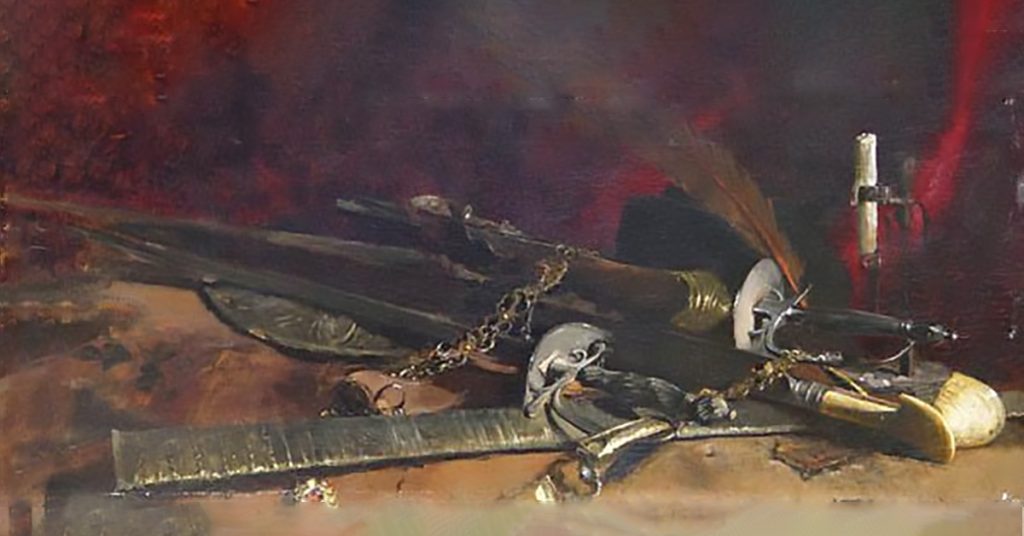Back to Melee Weapon Search
Sword, heavy saber
Sword, Blade, Sidearm, Cavalry, Pirate, Latin Europe, Saber
Stating in the late 15th Century, a different type of saber began to emerge in Central and Eastern Europe, rapidly spreading to the North and later to the West. A heavier weapon meant for sustained fighting as opposed to the ride-by slash. These were longer, broader-bladed, probably influenced by Hungarian sabers and possibly the talwar and / or the killij, with a blade flaring out toward the tip for greater cutting power. European heavy sabers typically had greater hand protection. This design remained popular though the 19th Century. A classic example is the British 1796 pattern light cavalry saber (not to be confused with the 1796 pattern heavy cavalry saber, which was actually a straight bladed backsword).
 Heavy Saber, Swiss, early 17th Century. With the extra hilt protection this is a 4/3/5 weapon.
Heavy Saber, Swiss, early 17th Century. With the extra hilt protection this is a 4/3/5 weapon.  British 1796 pattern light cavalry saber, Napoleonic War era, circa 1812-1815
British 1796 pattern light cavalry saber, Napoleonic War era, circa 1812-1815  A magnificent 16th Century Polish Karabella / Szabla saber, with a huge crossguard and a silver pommel. This would be a 4/3/5 weapon, with +3 Ehren
A magnificent 16th Century Polish Karabella / Szabla saber, with a huge crossguard and a silver pommel. This would be a 4/3/5 weapon, with +3 Ehren  Another 16th Century Karabella or Szabla type saber, Polish or Hungarian, with a gilded forte and hilt, and a very broad blade. his would be a +5 Ehren weapon.
Another 16th Century Karabella or Szabla type saber, Polish or Hungarian, with a gilded forte and hilt, and a very broad blade. his would be a +5 Ehren weapon.
| Name | Size | Reach | Speed | Defense | Base Damage | Attack Types | Primary Attack Types | Armor Pierce | Grapple | Hardness | HP |
|---|---|---|---|---|---|---|---|---|---|---|---|
| Sword, heavy saber | M | 4 | 3 | 4 | 1-8 | SCP | SC | 0 | 0 | 10 | 4 |
 Heavy Saber, Swiss, early 17th Century. With the extra hilt protection this is a 4/3/5 weapon.
Heavy Saber, Swiss, early 17th Century. With the extra hilt protection this is a 4/3/5 weapon.  British 1796 pattern light cavalry saber, Napoleonic War era, circa 1812-1815
British 1796 pattern light cavalry saber, Napoleonic War era, circa 1812-1815  A magnificent 16th Century Polish Karabella / Szabla saber, with a huge crossguard and a silver pommel. This would be a 4/3/5 weapon, with +3 Ehren
A magnificent 16th Century Polish Karabella / Szabla saber, with a huge crossguard and a silver pommel. This would be a 4/3/5 weapon, with +3 Ehren  Another 16th Century Karabella or Szabla type saber, Polish or Hungarian, with a gilded forte and hilt, and a very broad blade. his would be a +5 Ehren weapon.
Another 16th Century Karabella or Szabla type saber, Polish or Hungarian, with a gilded forte and hilt, and a very broad blade. his would be a +5 Ehren weapon.
